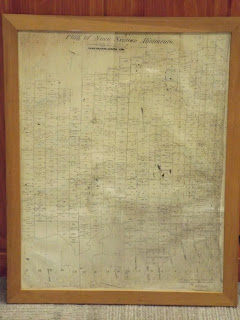understand the pioneers who established this community and uncovering the secrets they left behind over two centuries ago, is no easy task. (Archaeological surveys)
http://novascotia.ca/museum/blackloyalists/19002000/events1900/acker.htm
Left to right: Sharain Jones, assistant project archaeologist; Katherine Couttreau-Robins, assistant project archaeologist; Laird Niven (with buckets), project archaeologist; Corey Guye (in foreground), archaeological team.
Photo: Richard Plander Nova Scotia Museum
As people were scrambling to understand the early settlement of Birchtown and its residents, through archaeology, mapping and studying the information that was available, a mistake break through surprised those involved and anyone else who was following the story.
Just down the road 10 km south east of Birchtown in the community of Gunning Cove, a renovator was working on an old home. When the renovator was demolishing the old walls to replace them, an old piece of paper fell to the ground along with the wall debris.This piece of paper was almost overlooked and tossed into the garbage with the rest of the debris. Luckily, the renovator noticed it, picked it up and unfolded it.
This piece of paper would turn out to be the only known map of early Birchtown and its purposed land grants.
http://novascotia.ca/museum/blackloyalists/17751800/objects1775/survey_lg.htm
 |
| Goulden Map |
Link
 |
| Muster Book of Free Blacks, Settlement of Birchtown 1784 |
more information can be found here in "Understanding the use of space in an eighteenth century black loyalist community Birchtown, Nova Scotia" by Heather Macleod-Leslie [microform]







